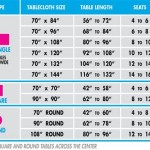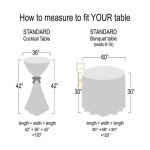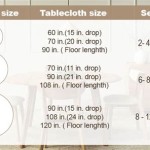Rug Under Dining Room Table Or No: A Comprehensive Guide
The decision of whether to place a rug under a dining room table, or to leave the flooring exposed, is a common design dilemma. It involves balancing aesthetics, functionality, and personal preference. Understanding the advantages and disadvantages of each option is crucial for making an informed decision that complements the overall design of the dining space.
The presence or absence of a rug can significantly impact the visual appeal and practical use of a dining room. A rug can define the dining area, add warmth and texture, and protect the flooring. Conversely, omitting a rug can create a cleaner, more minimalist look and simplify cleaning routines. Factors such as the size of the room, the style of the furniture, the type of flooring, and the intended use of the space should all be considered when making this choice.
Aesthetics: Enhancing or Detracting from the Dining Space
The aesthetic impact of a rug under a dining room table is undeniable. A well-chosen rug can serve as a focal point, anchoring the dining set and creating a sense of visual cohesion. It can introduce color, pattern, and texture, enriching the overall ambiance of the room. The rug can also complement the existing décor, tying together various elements and reinforcing the desired design style. For example, a traditional Persian rug can enhance the elegance of a formal dining room, while a modern geometric rug can add a contemporary touch to a more casual space.
However, an ill-chosen rug can have the opposite effect. A rug that is too small can make the dining set look disproportionate and the room feel cramped. A rug that clashes with the existing color scheme or furniture style can create visual discord. Furthermore, a rug with a busy pattern can overwhelm the space, particularly in a small dining room. Therefore, careful consideration of the rug's size, color, pattern, and material is essential to ensure that it enhances, rather than detracts from, the overall aesthetic of the dining space.
When foregoing a rug, the aesthetics shift to emphasizing the existing flooring. If the flooring is attractive and in good condition, such as hardwood or tile with a unique pattern, leaving it exposed can be a design choice in itself. It creates a cleaner, more open feel, particularly in smaller dining rooms. The focus then shifts to the dining furniture, allowing it to stand out against the backdrop of the flooring. This approach is often preferred in minimalist or modern designs where simplicity and clean lines are paramount.
The absence of a rug can also highlight the architectural features of the room, such as baseboards, molding, or wainscoting. These details can be appreciated without being obscured by a rug. In spaces with limited natural light, leaving the flooring exposed can also help to maximize the reflection of light, making the room feel brighter and more spacious.
Functionality: Practical Considerations for Dining Room Use
From a functional standpoint, a rug under the dining room table offers several benefits. Primarily, it provides a layer of protection for the flooring. Dining room floors are often subjected to spills, crumbs, and scratches from chairs being moved in and out. A rug can absorb these impacts, preventing damage to the flooring and extending its lifespan. This is particularly important for delicate flooring materials such as hardwood or natural stone.
A rug also contributes to noise reduction. It can absorb sound waves, minimizing echoes and creating a more comfortable dining environment. This is especially beneficial in open-concept spaces where noise can easily travel. The rug acts as a buffer, dampening the sound of chairs scraping against the floor and reducing the overall level of noise in the room.
However, rugs also present certain functional challenges in a dining room. One of the primary concerns is cleaning. Dining areas are prone to spills and food debris, which can easily stain or soil a rug. Regular vacuuming and spot cleaning are necessary to maintain the rug's appearance and prevent the buildup of dirt and allergens. Depending on the rug's material and construction, professional cleaning may be required periodically.
The absence of a rug simplifies cleaning considerably. Spills and crumbs can be easily wiped up from the hard flooring surface. Regular sweeping or mopping is usually sufficient to maintain cleanliness. This is particularly advantageous for households with young children or pets, where spills are more frequent. However, without a rug, the flooring is more susceptible to damage from spills and scratches.
Another functional consideration is chair movement. Chairs with casters or glides typically move more easily on a hard floor surface than on a rug. This can be a benefit for some, as it allows for smoother and quieter chair movement. However, it can also be a drawback, as chairs may slide too easily, potentially causing accidents or making it difficult to maintain a comfortable dining posture. Conversely, chairs on a rug may require more effort to move, but they are less likely to slide unexpectedly.
Size and Placement: Achieving the Right Proportions and Layout
If the decision is made to use a rug, selecting the right size and ensuring proper placement is critical. The rug should be large enough to accommodate all chairs, even when they are pulled out from the table. This prevents the back legs of the chairs from catching on the edge of the rug, which can be both uncomfortable and damaging to the rug. A general rule of thumb is to allow at least 24 to 36 inches of rug space around the table's perimeter.
To determine the appropriate rug size, measure the dimensions of the dining table and then add at least 48 to 72 inches to both the length and width. For example, if the table is 4 feet wide by 6 feet long, the rug should be at least 8 feet wide by 10 feet long. This ensures that the rug extends far enough beyond the table to accommodate the chairs. If the dining room is small, it may be necessary to choose a rug that is slightly smaller, but it is always better to err on the side of being too large rather than too small.
The shape of the rug should also complement the shape of the dining table. A rectangular rug works well with a rectangular table, while a round rug is best suited for a round table. An oval rug can also be used with a rectangular table, particularly if the room has curved architectural features. Avoid using a square rug with a round table or vice versa, as this can create a disjointed and unbalanced look.
When placing the rug, ensure that it is centered under the dining table. This creates a sense of visual balance and symmetry. If the dining room is not perfectly square or rectangular, it may be necessary to adjust the rug's position slightly to compensate for any irregularities in the room's layout. Consider the placement of other furniture in the room, such as sideboards or buffets, and ensure that the rug does not interfere with their placement or function.
If opting to forgo a rug, the focus shifts to the flooring itself. Consider the placement of the dining table in relation to the existing flooring pattern or features. For example, if the flooring has a border or a distinct pattern, position the table so that it is centered within this feature. This can help to define the dining area and create a sense of visual order.
In open-concept spaces, consider using other design elements to delineate the dining area. This could include using a different paint color on the walls, installing a decorative lighting fixture above the table, or placing a room divider or screen to create a sense of separation. These elements can help to define the dining space and create a distinct zone within the larger open area.
Ultimately, the choice of whether to use a rug under a dining room table is a personal one that depends on various factors. Carefully weighing the aesthetic, functional, and practical considerations will lead to a decision that best suits the individual's needs and preferences.

Rethinking Area Rugs For Dining Rooms Addicted 2 Decorating

Rethinking Area Rugs For Dining Rooms Addicted 2 Decorating

Dining Room Rug Dilemma Should You Have One

Simple Rules For Dining Room Rugs Floorspace

Do I Need A Dining Room Rug Shining On Design

Rethinking Area Rugs For Dining Rooms Addicted 2 Decorating

Dining Room Rug Or No Garden Home Party

Dining Room Rug Tips Daly Digs

Rugs Under Dining Tables Yes Or No Furniture Choice

Dining Room Rug Or No Garden Home Party








